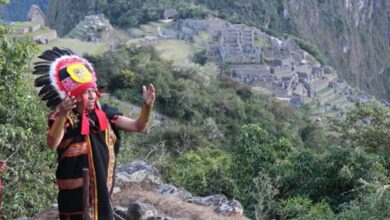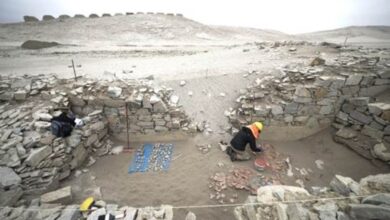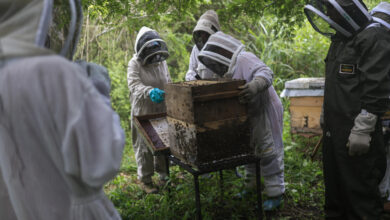Peruvian Artist’s Quest Proves Quechua Still Thrives Beyond All Odds

In the clatter of New York’s Tribeca Film Festival, Runa Simi arrives with an unexpected roar: a Peruvian father and son redub The Lion King into Quechua, proving that an ancient Andean tongue can still command laughter, wonder—and a standing ovation.
A Father’s Microphone, a Mountain’s Echo
Before any festival spotlight found him, radio announcer Fernando Valencia was hunched over a battered computer in the sweltering town of Quillabamba, Cusco. After his late-night shift, he slipped foam panels onto a bedroom wall, balanced a sock-covered microphone on stacked dictionaries, and beckoned his six-year-old son, Dylan, to step closer. “Hakuchu, Simba!—let’s start, Simba,” he whispered.
Those improvised sessions became a decade-long quest to give Disney’s The Lion King a Quechua voice. “Only one person was behind it all,” remembers filmmaker Augusto Zegarra, who stumbled onto Valencia’s homemade “Quechua clips” on YouTube in 2014 and “couldn’t believe the craftsmanship,” he tells EFE. Zegarra picked up his camera, caught a bus into the highlands, and began filming what would become Runa Simi—Quechua for “language of the people.”
Academic surveys from the Pontifical Catholic University of Peru estimate eight to ten million Quechua speakers across the Andes, yet half of Peru’s children now grow up monolingual in Spanish. Fernando feared his son might join that tide of forgetting. So every “Hakuna Matata” became “Mana Kusisqa,” every “Circle of Life” a chance to let Quechua ring against plastic Lego lions scattered on the studio floor.
A Door Slams Shut, and Another Swings Open
Midway through the film, Valencia rides a cramped elevator in Lima’s glossy business district, clutching a USB of his recordings and a typed request for an official Disney license. Security guards glance at his braided chullo hat; fluorescent lights buzz.
“Politely—very politely—they said no,” Valencia recalls on camera, the city’s gray drizzle sliding down the window behind him. He could have packed away the project then. Instead, he drove deeper into the mountains and finished the dub on his dime, accepting the legal risks.
Director Zegarra frames the refusal not as villainy but as proof of a global media machine that rarely pauses for Indigenous tongues. “The system wasn’t built to hear them,” he tells EFE, “so Fernando built his speaker.”1 Scholars in Arqueología Peruana note that Quechua has survived five centuries by precisely such stubborn improvisation.
Stadium Lights, Children’s Laughter
Cameras shake with anticipation as the documentary climaxes: a makeshift outdoor screening in a football stadium near Cusco. Families crowd benches, shawls flapping in the cold Andean wind. When Scar first snarls in gravelly Quechua, an older woman gasps—then laughs so hard she wipes tears with her rebozo.
Children who barely understand Spanish belt out “Mana Kusisqa!” in happy mispronunciations. “Humor carries the story further than lament ever could,” Zegarra smiles, quoting an insight from cultural historian Carlos Iván Degregori on Indigenous resilience.
Behind the screen, Valencia watches Dylan—now a teenager—glow with pride. “I wanted him to feel our language is worth the best stories,” the father murmurs. At that moment, the old stigma—Quechua as a marker of poverty or backwardness—seems to loosen under a shared chorus of giggles and applause.
A Festival Premiere, a Wider Horizon
Nine years after that first YouTube clip, Runa Simi lights up Tribeca’s packed theater. New York critics lean in, curious; Andean migrants sit straighter, misty-eyed. Zegarra knows his timing is pointed: Peru’s congress is debating a film bill that would slash support for Indigenous productions. “This movie is evidence of what’s at stake,” he tells El Comercio. It arrives as UNESCO warns that forty percent of the world’s 7,000 languages could vanish this century.
What comes next? Valencia still hopes Disney might call one day. “But even if they don’t,” he shrugs in the film’s final scene, “Simba already speaks Quechua.” Dylan, sporting studio headphones far too large for his head, grins: “Imayna kanki? —How are you?—That’s how he says hello now.”
Also Read: Mexican Treasures Inspire Global Awe Inside Storied Anthropology Museum
Whether a corporation ever grants official blessings, Runa Simi has already carved a larger space for Quechua on screens and in the imagination. It reminds viewers that language is not merely grammar; it is a lullaby, a joke, a father’s gift to a son. And, as Zegarra’s lens insists, it can roar enough to rattle skyscraper boardrooms thousands of miles from the Andes.





